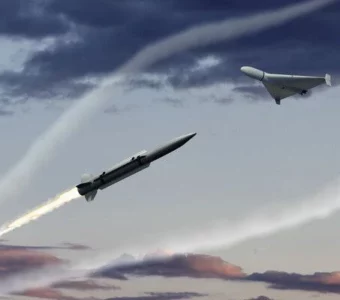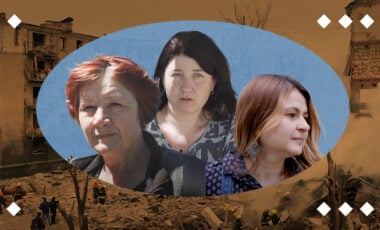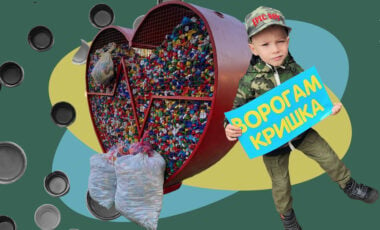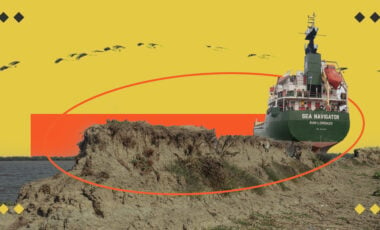Confiscation of Russian assets and compensation to Ukraine: problems and achievements
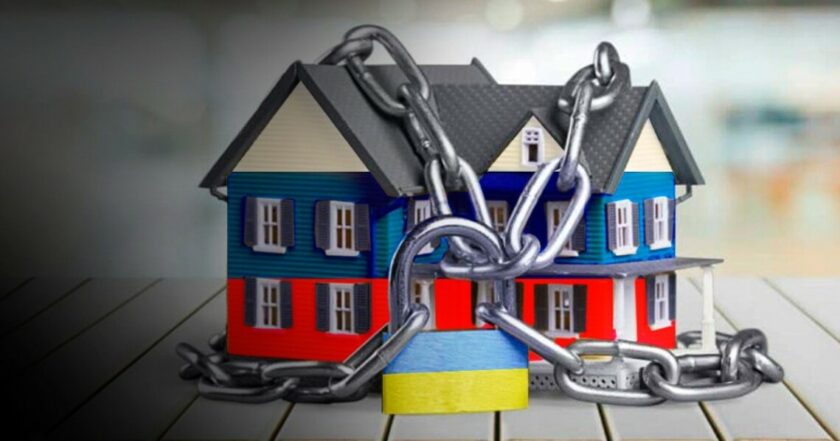
Photo: slovoidilo.ua
The full-scale invasion of Russia led to the most significant damage to the economy since World War II — entire cities and villages were destroyed, thousands of war crimes were committed, businesses were ruined, people died, and refugees were displaced. In addition, the occupiers commit environmental crimes on the territory of Ukraine, which also leads to multibillion-dollar losses. Therefore, Ukraine calls on the world to hand over frozen Russian assets and assets of Russian criminals once and for all and not to wait for the end of the war.
About $280 billion of frozen Russian state assets are located in the G7 countries. Ukraine expects these funds to become the primary source for post-war reconstruction.
However, at the G7 meeting in October of this year, Ukraine saw a "yellow card" for itself — representatives of the countries did not decide on the transfer of these assets to Ukraine but undertook to keep the assets of the Russian Federation frozen until the aggressor state agrees to pay reparations to Ukraine.
Nevertheless, there is still a chance for Ukraine to receive frozen Russian assets now, without waiting for the war's end and Russian compensation, if an appropriate legal mechanism for such a transfer is established. The basic condition for launching such a legal mechanism is the adoption of relevant legislation, the creation of authorized institutions or the granting of appropriate rights to already existing ones, the recording and documentary confirmation of the damages caused by the aggressor, and the formation of the relevant register, etc.
Ukraine and the international community need to solve all these problems now.
Political will and legal mechanisms: What steps have the international community and Ukraine already taken to obtain reparations?
In November 2022, a specially created working group on the development and implementation of international legal mechanisms for compensation for damage caused to Ukraine as a result of the armed aggression of the Russian Federation developed the concept of creating an International Compensation Mechanism. It is divided into three step-by-step components and involves the creation of:
- The International Register of Damages, which will be a comprehensive platform, a database of victims on the territory of Ukraine from the actions of the Russian Federation as of and after 24.02.2022. Such persons are both natural and legal entities and the state of Ukraine itself.
The International Compensation Commission, that will later consider the applications entered in the register of losses and award the amount of compensation. - Compensation fund — sources of payments and compensations, awarded compensation amounts. It is this fund that should be filled primarily with frozen Russian assets.
- According to the concept of the creation of the International Compensation Mechanism, victims of Russian aggression will be able to submit relevant documents and evidence to the registry to receive further compensation. The Compensation Commission will be the administrative body that will review applications from the registry and determine the amount of compensation for each applicant. The last and most crucial is the Compensation Fund, which will be the source of all payments and compensations and must be filled out as a matter of priority.
In a simplified way, the principle of operation of the compensation mechanism could be compared with the operation mechanism of an insurance company.
Ukrainians and the state of Ukraine, who suffered from Russian aggression, are the "insured." They apply to the register for the "insurance" and receive compensation similar to an insurance payment. The compensation commission is an "insurance company." It checks and monitors the damages and consequences caused by Russian armed aggression and determines the amount of compensation. The most interesting thing is that the "insurer," who has to pay the losses, is the aggressor country. The country is obliged to pay compensation since it caused them. Ukraine needs to work on how to force the aggressor to do this. It is not necessary to formally recognize Russia's responsibility for war crimes, but it is essential to find a way to force it to pay compensation.
Is Ukraine making enough efforts?
"On October 27, at the summit of EU leaders, a political decision was made that the profits that can be generated by financial institutions, where the frozen funds of the Russian Federation are located, can be transferred to Ukraine. It was also announced at this summit that during December, the lawyers of the European Commission should develop a step-by-step plan… This will also involve changes in European legislation. First, it should be a decision of the EU Council, which should be introduced by the EU High Representative for Foreign Affairs and Security Policy, Josep Borrell. It should be the decision of the European Union Commission to change the legislation and the European Parliament's decision to approve this legislation. Therefore, we mean this step-by-step plan when we say something will happen in December. There will be no decisions, as they will only be developed," Deputy Minister Iryna Mudra explained.
According to the prime minister, Ukraine is preparing an appropriate mechanism to confiscate up to about $500 billion frozen in the West.
However, there is not enough political will and developed legal mechanisms on the Ukrainian side to open this process. Western countries should have a legal basis for the confiscation and transfer of these funds to Ukraine because, without appropriate legal grounds, such a decision would be a violation of international law.
That is why close cooperation between Ukraine and countries where many frozen Russian assets are located is the key to success.
The G7 countries have repeatedly emphasized that they will study all possible ways of providing assistance to Ukraine in accordance with legal systems and international law, including using frozen sovereign assets of Russia.
The institution's spokesman, Christian Wiegand, claims that more than €200 billion of Russian state assets are currently frozen in the European Union alone.
Process in the West: USA, Belgium, Canada, Great Britain
In the United States of America, there is a long-running debate about the confiscation of Russian assets frozen in connection with the war in Ukraine. However, the first draft laws were recognized as unconstitutional, as they did not provide for a proper legal procedure.
On December 22, 2022, the US Senate approved an amendment to the Consolidated Appropriations Act. If the law is passed, it will allow the Ministry of Justice to confiscate the assets of Russian oligarchs by court order.
On June 15, 2023, the draft law "On restoring economic prosperity and opportunities for Ukrainians" was submitted to the Senate for consideration. It proposes to confiscate Russian sovereign assets and transfer them to Ukraine.
Among the main provisions of the draft law "On Restoration of Economic Prosperity and Opportunities for Ukrainians" is the point that the confiscation of Russian sovereign assets should be considered a countermeasure in accordance with international law.
It is proposed to include into the category of sovereign assets:
- Funds and property of the Central Bank of the Russian Federation, the Russian Direct Investment Fund, and the Ministry of Finance of the Russian Federation;
- Any sovereign assets of the Russian Federation that are found in financial institutions fully or partially controlled by the Russian government;
- Any other funds or property directly or indirectly controlled by the government of the Russian Federation.
The bill also provides additional authority to the State Department's Office of Sanctions Coordination to work with partners and allies abroad to confiscate additional Russian sovereign assets in other countries for the benefit of Ukraine.
The question arises: what to do with these assets? Experts talk about two possible scenarios:
The first is reinvestment in Ukraine. It foresees that the frozen assets will be used to compensate Ukraine for war damages. Such reparations may include rebuilding infrastructure, providing humanitarian aid, and supporting the economy.
The second one is about the introduction of a special tax. That is, the frozen assets will be sold, and the proceeds will be used for other purposes, such as supporting Ukraine's military efforts and capabilities or helping other countries affected by the war.
The Belgian government has already resorted to the second scenario. In June 2023, it transferred €92 million of tax revenues collected from the frozen assets of the Russian Federation to help Ukraine. The country allocated half of this amount to military aid to Ukraine.
In Belgium, a fund was additionally created to support Ukraine, the volume of which reaches €1.7 billion, which will be replenished from the proceeds from frozen Russian assets. The fund will be used for military and humanitarian aid and projects of the European Peace Fund.
Canada became the first country to legislate confiscation of Russian assets. The new mechanism allows for the seizure of assets of any type located in Canada, owned, held, or controlled directly or indirectly by a foreign country or national.
The confiscation mechanism is fairly balanced in terms of the influence of state actors and is legally sound: assets of any type that are located in Canada, owned, held, or controlled directly or indirectly by a foreign country or national of a foreign country can be subject to confiscation.
We are already seeing the first examples of proceedings: Canada has already started using new powers regarding Russian assets. In December 2023, the Canadian government seized $26 million from Granite Capital Holdings Ltd., a company owned by Russian oligarch Roman Abramovich.
According to Canada's experience, Great Britain is approaching the confiscation of Russian assets kept under its jurisdiction. This process began in the summer of 2022 when Prime Minister Liz Truss announced the country's intentions to follow Canada's example and confiscate the assets of Russian oligarchs to compensate for the damages caused to Ukraine.
In February 2023, a draft law was submitted to the British Parliament, which obliges the Secretary of State to submit proposals to the Parliament regarding confiscating Russian state assets. The document has passed the first reading in the House of Commons, but it must be passed by the House of Lords and approved by the King to enter into force.
In May, David Olton, a member of the House of Lords, tabled a draft amendment that would allow confiscation of Russian private assets. The amendment would require sanctioned oligarchs to declare all assets held in the UK six months before they were sanctioned.
If it turns out that the Russians did not declare all their assets or provided false information, this will qualify as sanctions evasion. This would, therefore, allow the UK to confiscate these assets under existing proceeds of crime legislation.
In the summer, the British government announced work on a draft law that would allow it to maintain sanctions against Russia until Moscow pays Ukraine compensation. It announced the creation of a new mechanism for transferring frozen assets to rebuild Ukraine.
At this time, the EU is looking for ways to help Ukraine without violating international law and without provoking international disputes. We are now seeing movement — the European Commission continues considering ways to use frozen Russian assets. On December 12, according to Bloomberg, the EC is preparing to publish the final draft of the plan for the use of sovereign Russian assets frozen on the territory of the EU for the benefit of Ukraine.
Why is it important for Ukraine?
This will increase sanctions pressure on Russia. The confiscation of Russian assets is an effective tool for striking the Russian economy and undermining the financial base of the Russian military machine.
This will help compensate for the damage caused to Ukraine. Funds from the sale of confiscated Russian assets can be used to restore Ukraine.
This would set a precedent for the future use of asset forfeiture as a tool of international law. Asset confiscation can be used to punish states that violate international law, for example, through aggression or war crimes.
***
To sum up, there are two key factors in confiscation issues — these are legal mechanisms that will allow seizing and confiscating assets not contrary to, but thanks to international law and the political will of the subject countries where these assets are directly located, and Ukraine must take these aspects into account.
A clearly developed and formed legal road map regarding the withdrawal and transfer of funds (or interest from the use of these assets), which Ukraine can offer and present to the international community, is the best option for defending its position and opening discussions on this issue already at the highest political levels.
Ukraine's further steps should be aimed at constantly reminding the world that this war is a threat to the international security system, so if the world does not want a repetition of the terrible tragedies of the 20th century, then it should make every effort to stop and punish the aggressor. This is the issue of operational military assistance and holding Russia accountable for its crimes.
The material was created within the framework of the ANTS project "Russian Assets as a Source of Recovery of the Ukrainian Economy," which is implemented in cooperation with the National Democratic Institute (NDI) with the financial support of the National Endowment for Democracy (NED).






